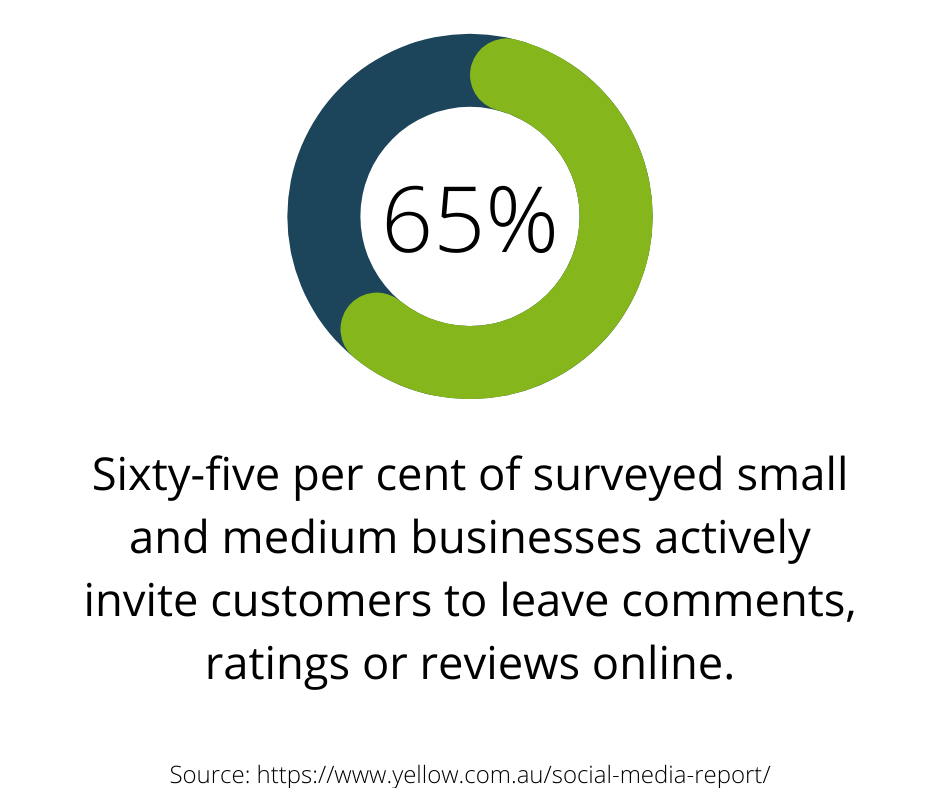Tips to Best Manage Reviews for Small Business
For small businesses, managing and responding to customer reviews can feel like a double-edged sword.
A 2020 report found small and medium businesses listed dealing with negative reviews online as the single biggest social media frustration. Yet almost all Australian consumers rely on online reviews before deciding whether to make a purchase. According to Capterra, 98% of Australians read online reviews before they make a purchase, and 94% believe them to be trustworthy.
Clearly, whether you like it or not, your small businesses can’t afford to ignore customer reviews.
To save you time and stress, here are some of the most efficient ways your small business can encourage, manage, and respond to customer reviews. Equipped with the right tools and strategies, managing your reviews can even be an uplifting and rewarding task.
Enabling and tracking reviews
Our first goal is to make it as easy as possible for customers to leave reviews. We can do this by giving them a few different platforms for them to leave reviews on.
If your small business has a Facebook page (and let’s be honest, it probably should) then you should check if you have reviews enabled in your page’s settings. Facebook is still the dominant social media platform in the world and, with over a billion people using it every day, combining reviews with your small business’s Facebook page is a no-brainer.
If you haven’t already, ensure your Google My Business account is set up and up to date. When a potential customer searches for you online, we want them to immediately see how highly rated your small business is – and Google My Business is the way to do this. You can save time by switching on email notifications to make sure you never miss a review again.

It’s also worth checking to see if your business should be listed on third-party review aggregators. Examples include Yelp, Product Review, Trust Pilot, plus industry-specific sites like Capterra (for software), Trip Advisor (for tourism and hospitality).
Be aware that there are software solutions out there that can search the web for reviews and collate them for you – but, for many small businesses with limited marketing budgets, it’s often better to just keep an eye on these major review sites.
Learning how to respond to reviews
It’s not unusual for small businesses to be apprehensive about opening the floodgate to public customer reviews. It can be scary to know anyone can publicly post a critical review and potentially impact your sales.
However, consumers are increasingly savvy to fake reviews. A mixture of negative and positive reviews can actually add authenticity to your small business. How you respond to reviews can be more important than the review itself.
Timely and personal:
As a general rule of thumb, you should try to respond to as many reviews as possible, as quickly as possible. And yes, that even includes the negative reviews. Don’t fall into the trap of only responding to positive reviews – face up to the negativity. Research tells us that 97% of potential customers read business’s review responses.
As you know, small businesses like yours thrive on being able to offer a more personal touch than faceless corporations. There’s no reason why this shouldn’t extend to how you treat customer reviews. By responding quickly to reviews with a personalised response you can remind your customers that there are humans behind the business they are reviewing.
Your response is an opportunity to take away some of the online anonymity and create a one-on-one connection with a customer.
Don’t let negativity get you down:
Even then most successful and popular businesses in the world receive negative reviews.
It’s inevitable – you are going to receive negative reviews. As tempting as it may be to stick your head in the sand and ignore all the negativity – it’s almost always better to respond compassionately.
A study by Trust Pilot tells us that people leave negative reviews to vent their frustrations, warn others in the community, and to feel empowered by expressing themselves.
Armed with this knowledge, you can try to address as many of these needs as possible in your response.
- Respond to the reviewer as a person, not a business.
- If you can, take accountability for the mistake or problem.
- You could try to provide an explanation for the issue.
- Even if you feel the criticism is unfair, it’s important not to further provoke the reviewer.
- Treat the review as an opportunity to improve your product or service.
- You can also offer a refund or an exchange.
It’s worth noting that your goal may not always be to convince the reviewer to change their review. Sometimes it’s enough to show that you have heard their feedback and are working towards a solution. Not only will this make the reviewer feel heard, but other prospective customers will see your empathy and professionalism.
Check out some of favourite, fantastic customer reviews and stories on our website.











Leave a Reply